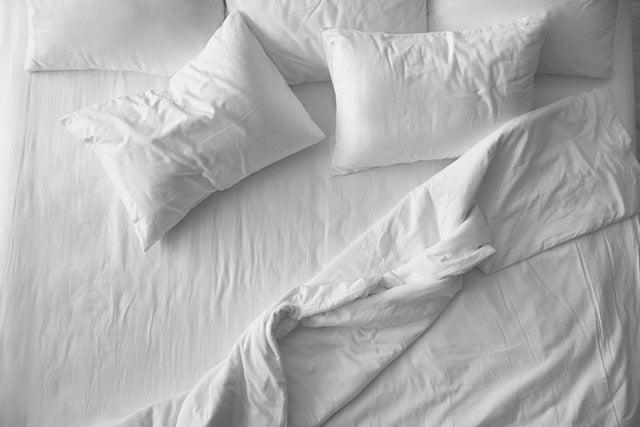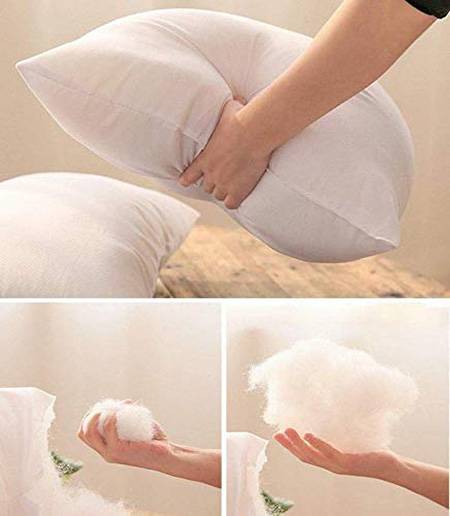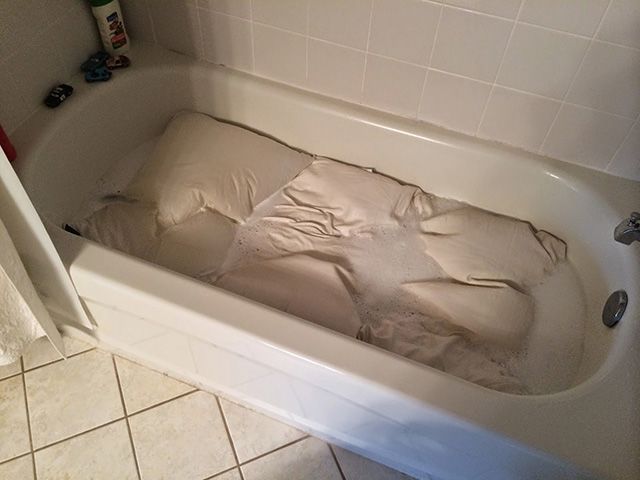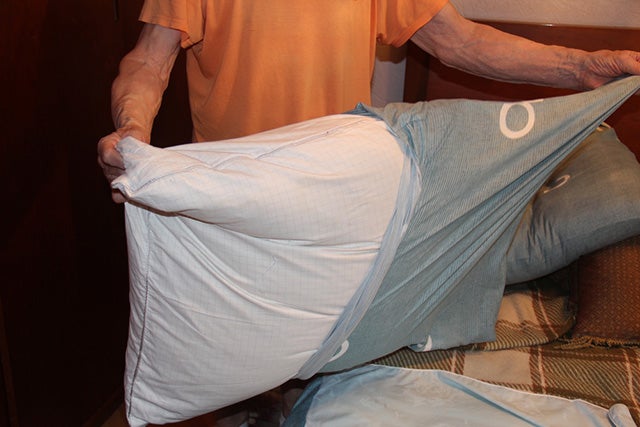Pillows are an essential bedding component.
They help you sleep more soundly at night by keeping your head cushioned and reducing pressure on other parts of your body (such as your neck and spine).
That is…until that old pillow of yours kicks the bucket.
Wondering how often to replace your pillow? Spoiler alert: It depends on a lot of factors!
Let’s talk about it.
Different Factors to Consider
The typical lifespan of a pillow is anywhere from 1 to 3 years. Your pillow may last a longer or shorter period of time, depending on a number of factors (namely: cleanliness, support, and pillow material). Let’s discuss these factors in a bit more detail.
— Cleanliness
As they say, cleanliness is next to godliness.
It naturally follows that if you want to sleep like the god or goddess you are, it’s vital to keep your pillow and other bedding items as clean and pristine as possible.
While simple things like washing your pillowcase every so often can help extend the life of your pillow, laundry detergent and hot water can only do so much. We humans sweat quite a lot during our sleep; we also shed dead skin cells all over the place, produce oil from our skin, and sometimes we get a little gassy at night (let’s be honest here).
In addition to the filth from our bodies, our pillows and pillowcases pick up and accumulate a crazy amount of other fun stuff (including a range of allergens and some nasty fungi).
At some point, filth and allergens accumulate to such an extent that we have no choice but to replace our pillows altogether. That weird yellow stain is definitely a solid indicator that your pillow’s time has come, but also be aware of how you feel each morning; if you have itchy eyes, a runny nose, or can’t stop sneezing, you should consider getting a pillow replacement.
— Support
Your pillow is probably a lot like your significant other.
It was love at first sight, things went great for a long time, but then you realized at some point that it’s just not the same pillow you met all those years ago.
An ideal pillow is one that offers ample support for your head and the rest of your body. Even if your current pillow used to give that support, all pillows eventually lose their fluff and get clumpy.
You should consider a pillow replacement if you:
- struggle to stay comfortable at night.
- experience aches and pains either at night or in the morning.
- often wake up with a headache.
In addition, you can normally tell how your pillow is doing in this regard by just looking at it. If your pillow was once fluffy and puffy but is now flat as flat can be, go out and get yourself the new pillow you (and your neck) deserve.
— Material
You can find pillows containing a range of stuffing materials, and no two materials will offer the same combination of comfort, support, and longevity.
According to The Sleep Foundation:
- Latex pillows tend to last the longest, with an average lifespan of 2 to 4 years.
- Memory foam and polyfoam pillows can last about 2 to 3 years.
- Buckwheat pillows can last a decade or longer, assuming you replace the husks on a regular basis.
- Down pillows can last about 1 to 3 years.
- Polyester (a.k.a. down alternative) pillows only last from about 6 months to 2 years.
You can keep your pillows at the upper end of their life span range by taking good care of them—we’ll talk more about this later!
— Changing Needs
Finally, you might need to swap your pillow out early if it just isn’t working for you anymore.
- Maybe its maintenance level is a little too high for your taste.
- Maybe you’ve recently started sleeping on your side instead of your back, and you’re experiencing neck pain.
- Maybe your S.O. is allergic to the feathers in your favorite down pillows.
In any case, you should keep your options open and consider buying a new pillow. A good night’s sleep is worth a little extra $$, right?
How to Make Your Pillow Last Longer
Here are some general care tips to help you keep your pillow in tip-top shape for as long as possible:
- Wash the pillow every 4-6 months using detergent and hot water.
- Wash the pillowcase once or twice a month.
- Fluff your pillow as needed.
Keep in mind that different pillow filling materials will have different cleaning needs. The Sleep Foundation has some excellent tips on how best to care for a variety of pillow types. Here’s a breakdown for you:
- Memory Foam / Polyfoam / Latex: Spot clean and let air dry.
- Down / Feather: Machine wash in warm water on gentle cycle; let air dry OR use the dryer on low setting.
- Polyester / Down Alternative: Machine wash in cold water on gentle cycle; use the dryer on low setting.
- Buckwheat: Avoid getting wet, and rather clean the pillowcase often.
Conclusion
You may be interested in: Best Pillow Reviews
A good pillow is crucial to sleeping well each night and feeling refreshed in the morning. As such, it’s important to replace your pillow every so often and to take good care of it in the meantime. We hope you now have a better idea of how frequently to replace your pillow and how to keep it in good shape.
Do you still have pressing questions about pillow replacement? Please share with us in the comments, and we’ll do our best to help you out!
Photo credit: New Africa/Shutterstock; fizkes/Shutterstock;
lenetstan/Shutterstock; chalermphon_tiam/Shutterstock;
Tosha toys/Shutterstock







